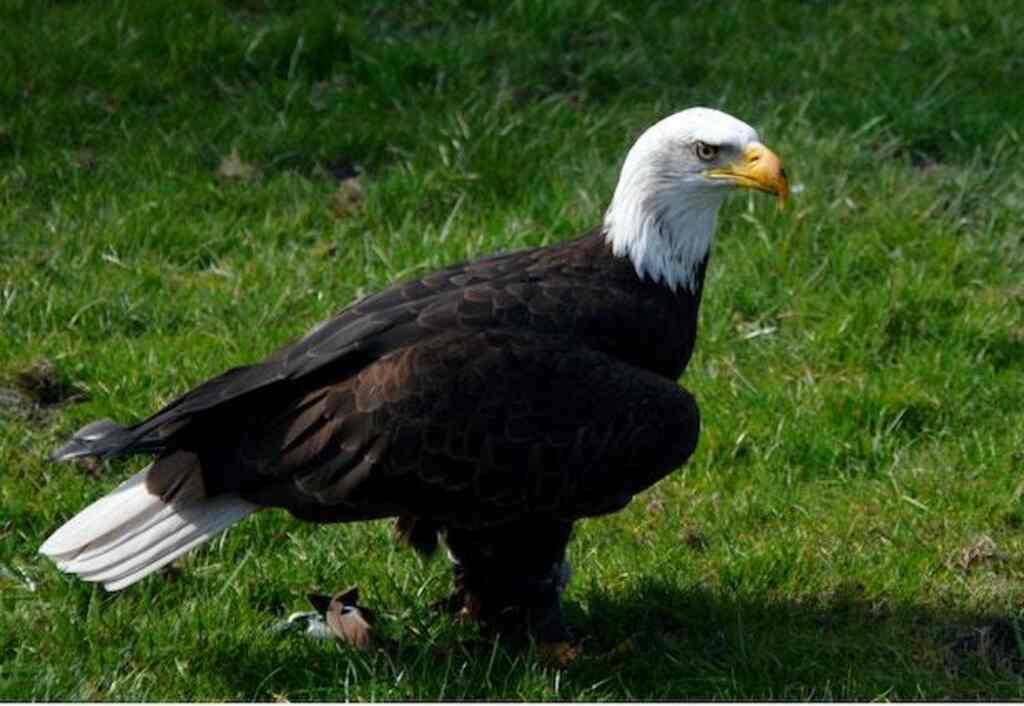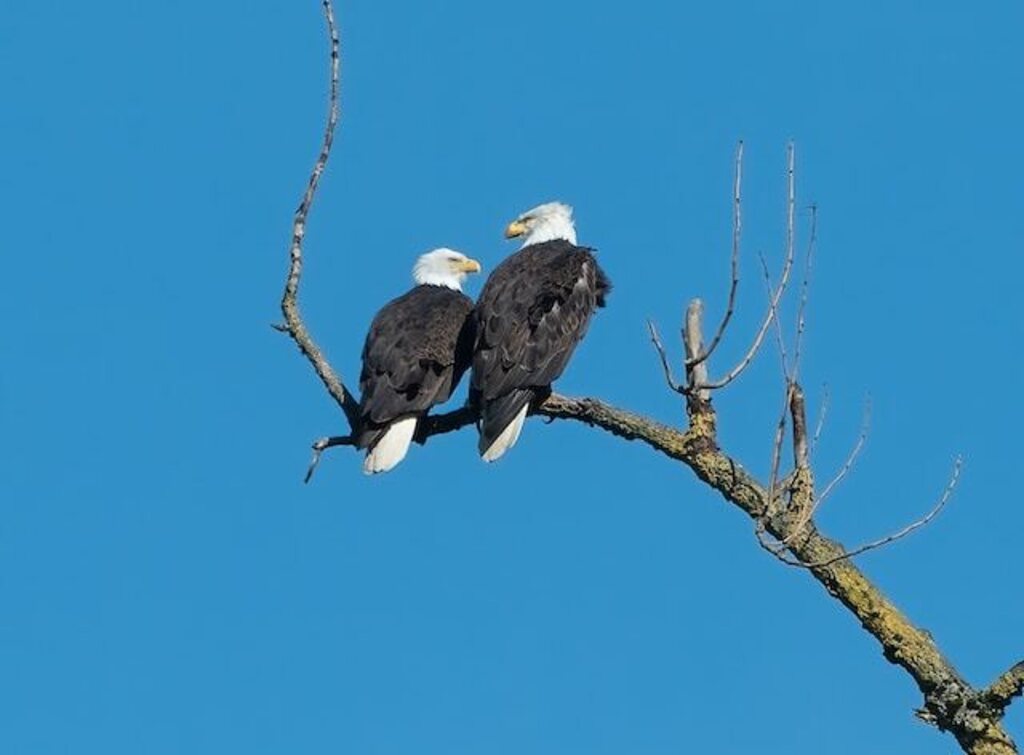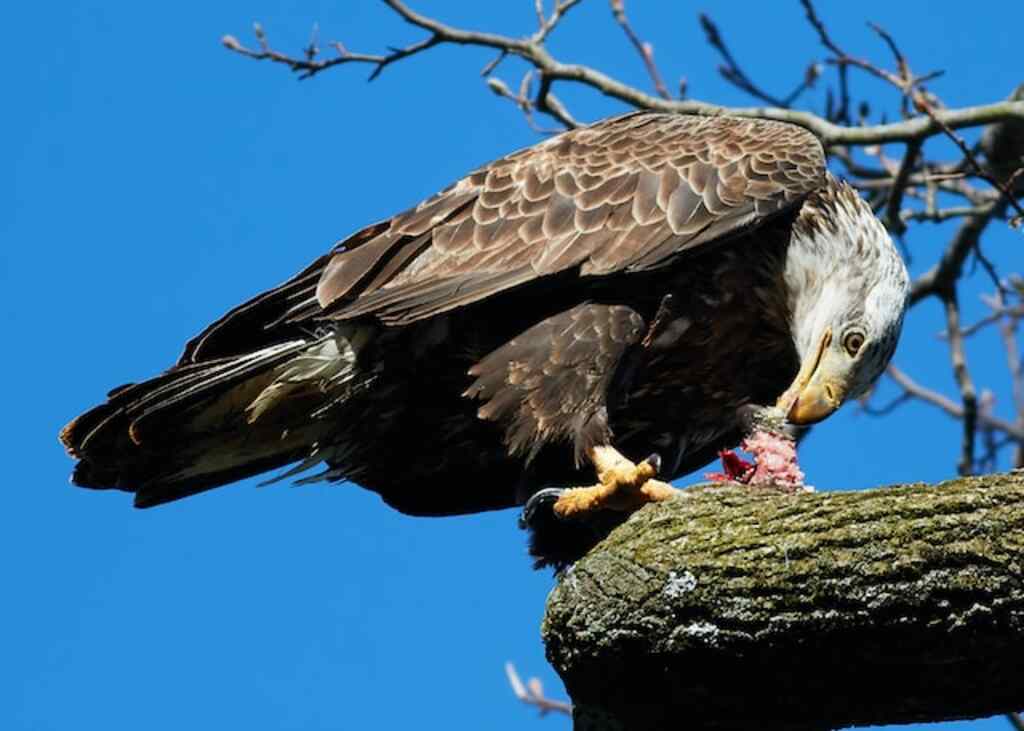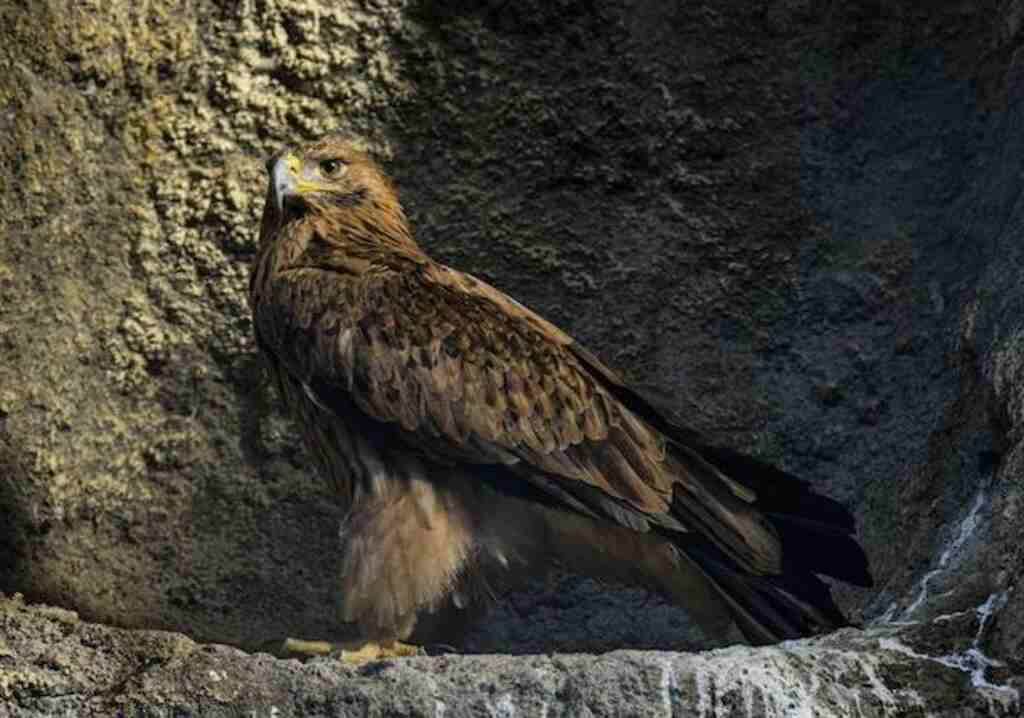Do Eagles Eat Butterflies? The short answer is no, but let’s embark on a whimsical adventure to explore the fascinating world of these majestic hunters of the skies.
Amidst their carnivorous diet, do they have a taste for delicate butterflies?
Join us as we uncover the truth behind eagles and butterflies, from their powerful hunting techniques to the intricate tapestry of their ecosystem.
Get ready for a captivating journey that will leave you marveling at the wonders of nature.
Table of Contents
- 1 Key Takeaways
- 2 The Carnivorous Diet of Eagles
- 3 Do Eagles Eat Butterflies
- 4 Rare Instances of Butterfly Consumption
- 5 Nutritional Value of Butterflies
- 6 Eagle Hunting Techniques
- 7 Availability of Butterflies in Eagle Habitats
- 8 Role of Butterflies in the Eagle’s Ecosystem
- 9 Other Food Sources for Eagles
- 10 Conservation and Protection of Eagles
- 11 The Fascinating World of Butterflies
- 12 Frequently Asked Questions
- 13 Conclusion
- 14 Author
Key Takeaways
- Eagles occasionally consume butterflies, especially during periods of food scarcity or changes in prey availability.
- Butterfly consumption by eagles is an area of ongoing research, with potential impacts on population dynamics and distribution.
- Butterflies play a crucial role in maintaining plant diversity through pollination, indirectly benefiting eagles by providing a varied and abundant food source.
- Conservation efforts for butterflies are crucial for maintaining the delicate balance of ecosystems and ensuring food availability for eagles.
The Carnivorous Diet of Eagles
Eagles are known for their carnivorous diet, which includes consuming a variety of prey such as butterflies.
Their diet primarily consists of fish, small mammals, and birds, but they have been observed consuming butterflies in rare instances.
However, the consumption of butterflies is not a significant part of their diet and is more commonly seen during periods of food scarcity or changes in the availability of their usual prey.
The impact of climate change on eagle populations and their migration patterns may also influence their diet and feeding habits.
Do Eagles Eat Butterflies
No, eagles do not typically eat butterflies. Their diet primarily consists of fish, small mammals, and birds. While eagles are skilled hunters, they prefer larger prey to satisfy their nutritional needs and seldom target delicate butterflies.
Rare Instances of Butterfly Consumption
In rare instances, certain species of birds have been observed consuming delicate and vibrant butterflies. These instances, although uncommon, highlight the diverse diet of these birds and their ability to adapt to different food sources.
While butterflies are not a primary prey for most bird species, their consumption can have an impact on the ecosystem. The table below illustrates some examples of bird species known to consume butterflies:
| Bird Species | Examples of Butterflies Consumed |
|---|---|
| Swallowtail Tanager | Swallowtail butterflies, Hairstreaks |
| Purple-throated Woodstar | Longwing butterflies, Skipper butterflies |
| European Bee-eater | Admirals, Skippers, Cabbage White |
| Painted Bunting | Monarchs, Buckeyes, Sulphurs |
| Green Jay | Swallowtails, Whites, Metalmarks |
The impact of butterfly consumption on their population dynamics and distribution is an area of ongoing research. Understanding the nutritional value of butterflies will provide insights into the role they play in the diet of these birds.
Nutritional Value of Butterflies
The nutritional value of butterflies is a subject of interest in ongoing research, as it provides valuable insights into the dietary habits and ecological role of certain bird species.
Studies have shown that butterflies are a rich source of protein, essential amino acids, and vitamins.
Interestingly, butterfly farming has gained traction as a sustainable practice to meet the demand for these insects.
Additionally, the study of butterfly migration patterns has shed light on the intricate web of ecological interactions.
Understanding these aspects is crucial for comprehending eagle hunting techniques.
Eagle Hunting Techniques
With their keen eyesight and lightning-fast reflexes, these majestic predators employ a hunting technique akin to a skilled archer, swiftly swooping down upon their unsuspecting prey from great heights.
Eagle hunting strategies involve the identification of potential targets through careful observation of movement patterns and coloration.
Butterflies, known for their vibrant hues and delicate flight, often fall victim to eagle predation due to their resemblance to other insects.
This leads us to the subsequent section on the availability of butterflies in eagle habitats.
Availability of Butterflies in Eagle Habitats
Butterflies, with their vibrant colors and delicate flight, often find themselves at the mercy of eagle predation due to their striking resemblance to other insects.
However, recent research suggests that butterfly populations are experiencing a decline, which has a significant impact on eagle habitats.
The decrease in butterfly numbers reduces the availability of prey for eagles, potentially leading to changes in their foraging behaviors and overall ecosystem dynamics.
This emphasizes the crucial role butterflies play in the eagle’s ecosystem.
Role of Butterflies in the Eagle’s Ecosystem
This discussion will explore the role of butterflies in the ecosystem of eagles, focusing on two key points: butterfly pollination and plant diversity, as well as the indirect benefits of butterflies for eagles.
Butterfly pollination plays a crucial role in maintaining plant diversity by aiding in the reproduction of various plant species.
Additionally, butterflies serve as a food source for eagles, contributing to their overall nutrition and survival.
Butterfly Pollination and Plant Diversity
Butterfly pollination plays a crucial role in maintaining plant diversity.
1) The intricate dance of butterfly migration patterns ensures the transfer of genetic material between plant populations, promoting gene flow and genetic diversity.
2) Through their behavior and communication, butterflies effectively navigate and locate specific plants for pollination, ensuring the survival of both the plant and butterfly species.
3) This mutually beneficial relationship between butterflies and plants creates a diverse ecosystem that supports a wide range of organisms.
Transitioning to the subsequent section, the indirect benefits of butterflies for eagles become evident.
Indirect Benefits of Butterflies for Eagles
The presence of butterflies in an ecosystem contributes to the survival and well-being of other organisms, such as eagles, through indirect means.
Butterflies play a vital role in the ecosystem by pollinating flowers and aiding in the reproduction of plants.
This, in turn, leads to increased plant diversity, providing a more varied and abundant food source for eagles.
Butterfly conservation efforts are crucial for maintaining the delicate balance of the ecosystem and ensuring the availability of other food sources for eagles.
Other Food Sources for Eagles
Birds of prey such as eagles rely on a diverse range of food sources including small mammals, fish, and reptiles to sustain their high-energy lifestyles, showcasing their adaptability as skilled hunters in the animal kingdom.
Eagles can also prey on other birds, such as doves, ducks and geese, and even carrion.
This flexibility in their diet allows them to thrive in various habitats and ensures their survival in the face of changing environmental conditions.
Transitioning into the subsequent section, it is crucial to address the conservation and protection of eagles to maintain their populations.
Conservation and Protection of Eagles
Conservation efforts and protective measures are essential for ensuring the long-term viability and survival of eagles in their various habitats.
Effective conservation strategies are crucial to mitigate the negative impact of human activities on eagle populations and their ecosystems.
By preserving and restoring their natural habitats, regulating hunting and trapping, and raising public awareness, we can safeguard these majestic birds and maintain the balance of local ecosystems.
Understanding the importance of eagles in their environment sets the stage for exploring the fascinating world of butterflies.
The Fascinating World of Butterflies
Fluttering delicately through sunlit meadows and garden patches, these vibrant creatures with their intricate patterns and graceful movements mesmerize observers, evoking a sense of wonder and enchantment.
The fascinating world of butterflies also intersects with the migration patterns of eagles.
Just as eagles migrate across vast distances in search of food and suitable habitats, butterflies to embark on incredible journeys, sometimes spanning thousands of miles, as they navigate landscapes and climates to find their preferred breeding grounds.
Both eagle migration and butterfly migration demonstrate the resilience and adaptability of these remarkable creatures.
Frequently Asked Questions
What is the average lifespan of an eagle?
The average lifespan of eagles varies depending on several factors, such as species, habitat, and environmental conditions. Factors affecting eagle lifespan include predation, disease, availability of food, and human activities.
Do eagles migrate to different areas in search of food?
Eagle migration patterns are influenced by the availability of food sources, with climate change impacting these patterns. As their habitats shift, eagles must adapt and migrate to different areas in search of sustenance.
How do eagles build their nests?
Eagles exhibit diverse nesting habits and employ various construction techniques for their nests. These include selecting sturdy tree branches, interweaving twigs, and reinforcing the structure with soft materials like moss and feathers.
What are the main threats to eagle populations?
The main threats to eagle populations include climate change and habitat loss. These factors have a detrimental impact on their natural habitats and can lead to a decrease in their population numbers.
Are there any specific species of butterflies that eagles prefer to eat?
Butterfly species preferred by eagles vary depending on their geographic location and habitat. The impact of butterfly population on eagle diet is significant as it influences their overall prey availability and nutritional intake.
Conclusion
In conclusion, the dietary habits of eagles reveal their carnivorous nature and their occasional indulgence in butterflies.
While butterflies may not be a staple in their diet, their consumption provides some nutritional value.
Eagles employ impressive hunting techniques to catch their prey, including butterflies, in their habitats.
Butterflies play a role in the intricate ecosystem of these majestic birds, and their availability in eagle habitats contributes to the sustenance of these magnificent creatures.
However, eagles also rely on a variety of other food sources for their survival.
It is crucial to prioritize the conservation and protection of eagles to ensure the preservation of their fascinating world, where butterflies dance like ethereal jewels in the sky.







